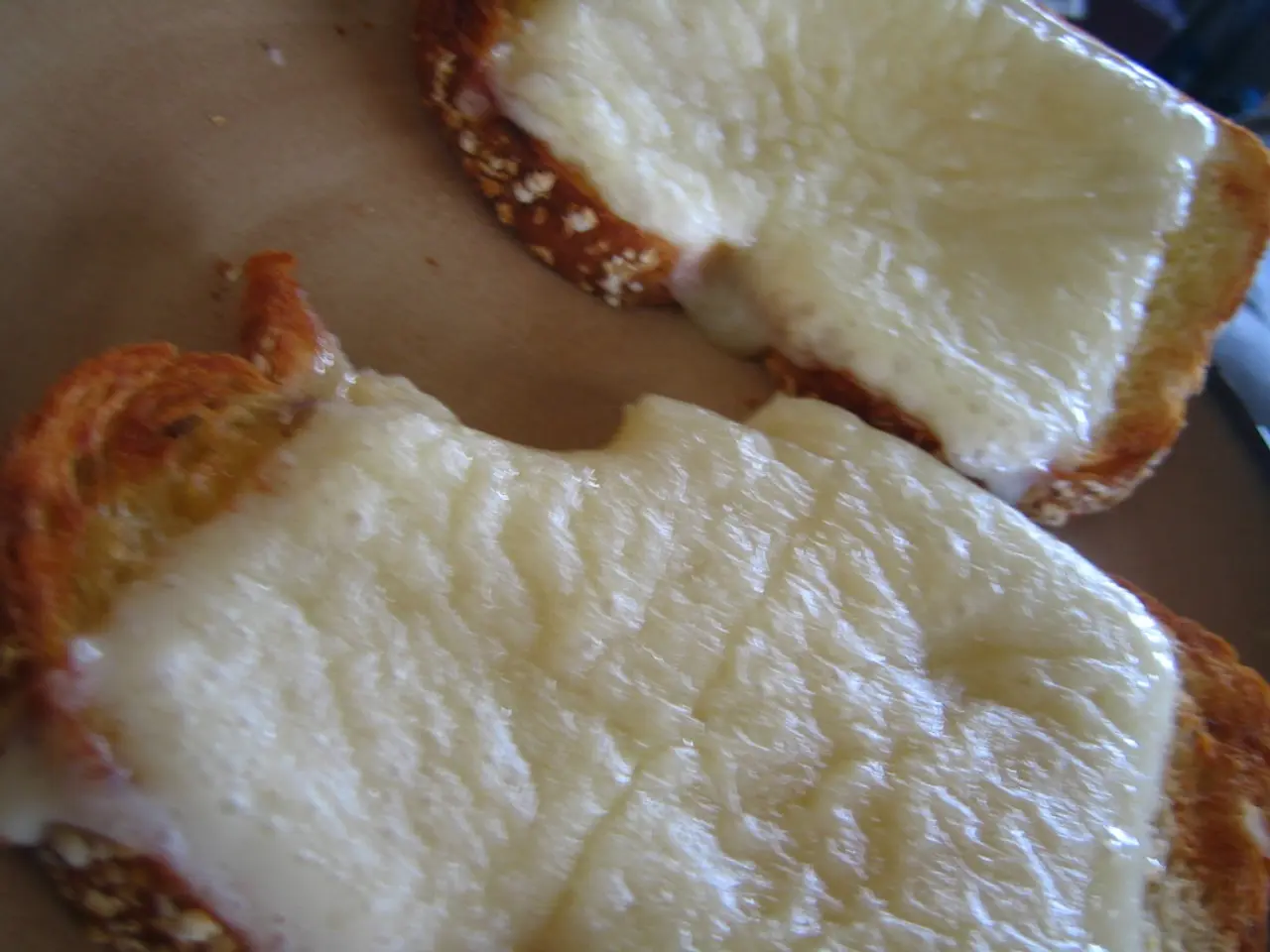Psoriasis Treatment Through Occlusion: Explanation of Methods and Efficacy
Psoriasis, a common skin condition characterized by red, scaly patches, can be managed effectively with a variety of topical treatments. One method that has gained attention is occlusion therapy, a technique that enhances the effectiveness of these treatments.
According to the Food and Drug Administration (FDA), coal tar concentrations between 0.5 and 5% are considered safe and effective for psoriasis treatment, with no known carcinogenic effects. Coal tar can help reduce inflammation, itching, and scaling, and slow down the rate at which skin cells grow.
Occlusion therapy involves the application of topical treatments and the subsequent covering of the affected area with materials such as plastic wrap, cellophane, or waterproof dressing. This method traps moisture and increases skin absorption, thereby speeding the therapeutic effect and improving outcomes in psoriasis treatment.
Commonly used topical medications with occlusion therapy for psoriasis include potent corticosteroids, such as clobetasol propionate and triamcinolone. These agents reduce scaling, redness, and itching. Clobetasol ointment, with its greasy formulation, is often used under occlusion because it helps lock in moisture and enhance penetration, making it effective for severe plaque psoriasis.
Topical retinoids, such as tazarotene (0.1% gel or cream), are another class of medications used in conjunction with occlusion therapy. Tazarotene applied under occlusion has shown efficacy in nail psoriasis and plaque reduction, improving symptoms like onycholysis and pitting with good tolerability.
Vitamin D analogs, often used alone or in combination with corticosteroids, help normalize skin cell growth and differentiation. Though not specifically highlighted under occlusion in the sources, they are a common component in psoriasis topical regimens.
Occasionally, calcineurin inhibitors are used as steroid-sparing agents, particularly for nail psoriasis or sensitive areas.
It's important to note that if left on the skin for too long, salicylic acid can cause irritation. Salicylic acid can also cause internal toxicity if applied over large areas of the skin. People should consult a healthcare professional about whether it is safe for them to use occlusion with salicylic acid.
In other areas of the body, such as the armpit, groin, or face, occlusion may produce side effects. In these cases, it's crucial to consult a healthcare professional for guidance.
Emollients, such as moisturizers and oils, may help restore hydration and soothe pain in psoriatic skin. They can be used in conjunction with occlusion therapy to further improve skin health.
Research suggests that occlusion has standalone benefits for psoriasis. Occlusion moisture and heat help hydrate and soften the skin, driving topical medication through psoriatic plaques and increasing penetration of topical treatments into the skin. This can lead to a more effective treatment and potentially faster improvement.
In summary, the usual topical treatments combined with occlusion for psoriasis are potent corticosteroids, retinoids, and occasionally vitamin D analogs or calcineurin inhibitors. The goal is to increase efficacy and accelerate improvement. Occlusion may increase the effectiveness of topical medications by up to 10 times, as suggested by research. Consult a healthcare professional for personalised advice on the best treatment approach for managing psoriasis.
- Treatment seekers with psoriasis may consider occlusion therapy, a method that enhances the effectiveness of topical treatments, especially for severe plaque psoriasis.
- Switchers who have tried various psoriasis treatments and seekers looking for new therapies might find occlusion therapy beneficial, as it can increase the absorption and penetration of topical treatments into the skin.
- Healthcare professionals often recommend occlusion therapy for treatment personas who struggle with managing psoriasis due to its standalone benefits in moisturizing and hydrating the skin, which can drive topical medication through psoriatic plaques.
- In addition to topical retinoids like tazarotene, vitamin D analogs, and occasionally calcineurin inhibitors, emollients can be used in conjunction with occlusion therapy to restore hydration and soothe pain in psoriatic skin.
- Medical-conditions like psoriasis, which are characterized by red, scaly patches, can be managed effectively with a variety of topical treatments, and the use of occlusion therapy can potentially double their effectiveness, as suggested by science.
- It's important for treatment seekers, switchers, and all persons with psoriasis to consult healthcare professionals for personalized advice on the best treatment approach, which may involve topical treatments, occlusion therapy, and other medical-conditions management strategies.




